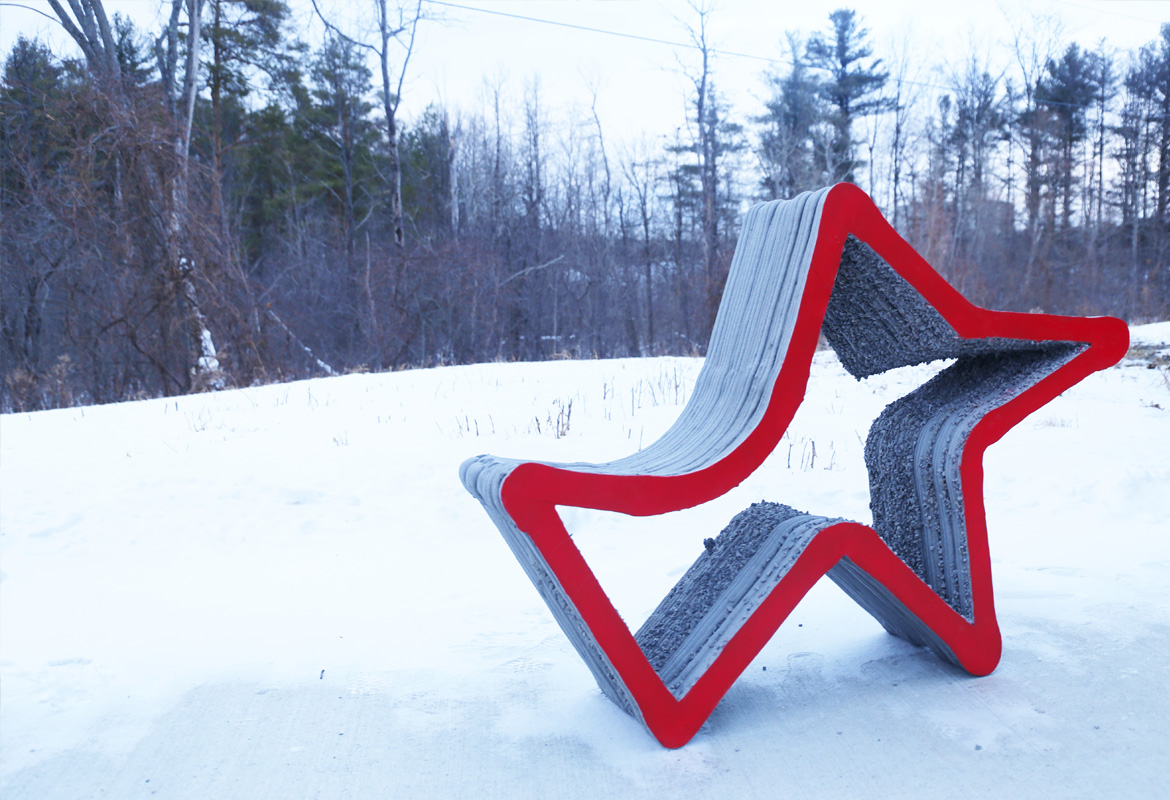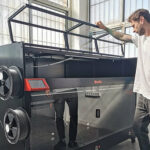Architecture and design group HANNAH are decorating parks with their off-beat brand of furniture. Their latest construction project is now available for visitors at Socrates Park, New York. The series of 3D printed seats are similar to benches but with the added versatility to accommodate various seating styles. The team have named the seats the “RRRolling Stones” and won Folly/Function, an annual competition held by the Architectural League of New York.
Numbering at twenty-five in total, the chairs have a very unique and utilitarian design. The 5-sided shapes allow for users to place them in a series of different positions, allowing varying sitting postures. They are made of a kind of graphic silhouette style, so they are light and hollow from the middle despite being largely concrete and steel with rebar enforcement for load-bearing. As such, visitors to the park can move them around and put them together during major events to form a connected seating area.
Lok, Zivkovic, and members of the RCL were present at Socrates Park running a printing demonstration on July 12. The seating areas have since been open to the public.
Modernising Public Park Seating

Cornell University professors Leslie Lok and Sasa Zivkovic have stated that they wanted to highlight the practical side of 3D printing technology. In this regard, the production and design of the seats also carries with it some artistic oddities worth noting. The team came up with the overall structure by cobbling together a series of open source models on the web.
With the aid of the Cornell Robotic Construction Laboratory, they assembled a specialty open-source printer just for this project. The $5,000 printer gravity-feeds the PVC hopper at it’s top and passes the concrete through. It also uses an auger in the nozzle (which controls the extrusion rate), while controlling movement of the printing arm across the print area with the a pulley and counterweight system.
The Unique Printing Process
The seats were printed at a heat-controlled manufacturing area in Ithaca, each made in thin layers. The used Portland cement, a plasticizer for elasticity, and nylon threads for added strength. The pieces all happen to be distinct from each other due to a plethora of factors. From machine vibrations, the concrete’s viscosity, wind factors, the slope of the floor to human error, no two pieces are the same. They all feature some form of unique identity and perhaps that’s the way HANNAH prefers it.
For the sake of control, they placed gravel in the centre to hold the structure as the layers were printing. Even the printer requires quite a different approach than the fully automated techniques we’ve gotten used to. Mixing/feeding the concrete and correcting the gaps and streaks in the print before they dry are all manual tasks in this process. Finally, the team then had to cut rebar and put it in for additional support.
The seats are functional and stylish, and thus a welcome addition to any sculpture park.
All featured images courtesy of HANNAH.











